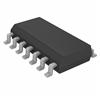MC7445: Features: Major features of the MPC7455 are as follows:• High-performance, superscalar microprocessor - As many as four instructions can be fetched from the instruction cache at a time - As ma...
floor Price/Ceiling Price
- Part Number:
- MC7445
- Supply Ability:
- 5000
Price Break
- Qty
- 1~5000
- Unit Price
- Negotiable
- Processing time
- 15 Days
SeekIC Buyer Protection PLUS - newly updated for 2013!
- Escrow Protection.
- Guaranteed refunds.
- Secure payments.
- Learn more >>
Month Sales
268 Transactions
Payment Methods
All payment methods are secure and covered by SeekIC Buyer Protection PLUS.

 MC7445 Data Sheet
MC7445 Data Sheet






